
The Fishkeepers Guide to Oddball Aquarium Fish
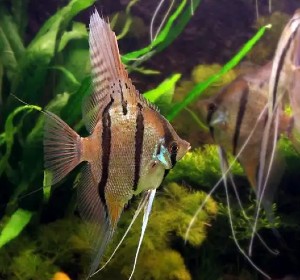 Oddball is a phrase used to describe an aquarium fish that has an odd appearance or behavior and is not fit for a typical community tank. Some oddballs may need to be housed in a separate tank as a single specimen.
Oddball is a phrase used to describe an aquarium fish that has an odd appearance or behavior and is not fit for a typical community tank. Some oddballs may need to be housed in a separate tank as a single specimen.Oddballs, on the other hand, are popular due to their appearance, form, and personality. Polypterus, Snakeheads, Pufferfish, Knifefish, Stingrays, Tigerfish, and Piranha are all popular oddballs. All of the aforementioned consume meaty meals and are popular among anglers who like biting fish. Oddballs are treated more like pets than a shoal of Neon tetras, and since they live so long, they often become family members.
General Oddball Fish Care
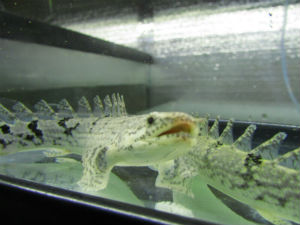 Polypterus, Snakeheads, and Lungfish, for example, are exceedingly resilient in the wild, able to breathe air and even move over land. However, because of their big size and meaty habits, all oddball aquariums should be adequately filtered. For eccentric aquaria, a huge external filter or two is frequently the order of the day.
Polypterus, Snakeheads, and Lungfish, for example, are exceedingly resilient in the wild, able to breathe air and even move over land. However, because of their big size and meaty habits, all oddball aquariums should be adequately filtered. For eccentric aquaria, a huge external filter or two is frequently the order of the day.The size of the tank is determined by the species being maintained. Many oddballs, such as dwarf snakeheads, gobies, and leaffish, need a minimum of a five or six foot tank, while others, such as dwarf snakeheads, gobies, and leaffish, may be housed in standard-sized aquariums for lengthy periods of time. Huge unusual species like Arowana need massive custom-built aquariums, with consideration given to their ultimate size of three feet, lifespan, and the expense of feeding and running such a large tank for twenty years or more.
Heaters should be covered by a cage or, better yet, incorporated into the external filter or connected inline, into filter pipework, if you want to maintain big, strong fish. To avoid your cherished pet from escaping or leaping out, all weird aquaria should be covered.
All strange species, particularly nocturnal species and those that tend to hide, should have dim lighting. A single low-powered LED bulb may look quite effective when used to illuminate a small section of the tank or when angled to simulate sunset through the trees above.
How Should you Aquascape your Oddball Fish Aquarium?
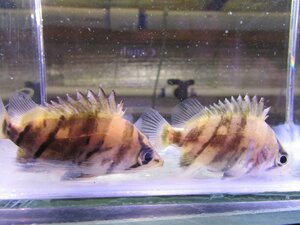 The requirements of the fish should always come first, therefore give plenty of hiding spots, and if you have many species that prefer to hide together, supply at least one hiding spot per fish. Many animals find small plastic pipe to place their bodies inside and push their heads out to be a comfort, and this may be simple caves, flowerpots, and sections of pipe.
The requirements of the fish should always come first, therefore give plenty of hiding spots, and if you have many species that prefer to hide together, supply at least one hiding spot per fish. Many animals find small plastic pipe to place their bodies inside and push their heads out to be a comfort, and this may be simple caves, flowerpots, and sections of pipe.For a more natural appearance create a section of river that resembles the native habitat of your freshwater weird fish. Use huge, smooth stones on a bed of soft sand and large driftwood pieces. To recreate a gloomy river ecosystem, use fake plants, hardy living plants like Anubias, or no plants at all. To compliment the gloomy motif and give the fish a sense of security, choose a black or structured backdrop. Sharp decorations should be avoided since huge oddballs may damage themselves if frightened.
What Types of Dry Foods do you Feed Oddball Fish?
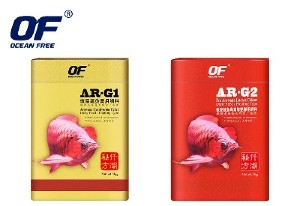 A decent brand of dry food that provides a comprehensive diet as well as all the vitamins and minerals your fish needs to develop and remain healthy is the ideal diet for all oddball species. Here a list of oddball fish foods in various categories. If they won't eat dry foods at first, wiggle the food in the water to make it appear alive, or toss the food onto the surface from afar while concealing. Offer frozen foods like cockle, mussel, prawns, Lancefish, and Whitebait, but mix with dry food pellets for added nutrients - a common tactic in public aquariums.
A decent brand of dry food that provides a comprehensive diet as well as all the vitamins and minerals your fish needs to develop and remain healthy is the ideal diet for all oddball species. Here a list of oddball fish foods in various categories. If they won't eat dry foods at first, wiggle the food in the water to make it appear alive, or toss the food onto the surface from afar while concealing. Offer frozen foods like cockle, mussel, prawns, Lancefish, and Whitebait, but mix with dry food pellets for added nutrients - a common tactic in public aquariums.Oddball Fish and Choosing Tankmates
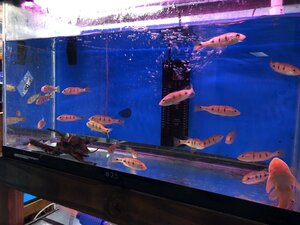 Every strange fish should be investigated to see how it behaves and what other fish it can get along with. Red Bellied Piranhas should be maintained alone in huge shoals. Black Piranha, a bigger and more aggressive species, should be housed in a tank by itself. Polpterus are peaceful and can mix with any fish too big to consume or tiny enough not to eat them. Pufferfish are best maintained in single species aquaria, but Polpterus are peaceful and can mix with any fish too large to eat or small enough not to eat them.
Every strange fish should be investigated to see how it behaves and what other fish it can get along with. Red Bellied Piranhas should be maintained alone in huge shoals. Black Piranha, a bigger and more aggressive species, should be housed in a tank by itself. Polpterus are peaceful and can mix with any fish too big to consume or tiny enough not to eat them. Pufferfish are best maintained in single species aquaria, but Polpterus are peaceful and can mix with any fish too large to eat or small enough not to eat them.Keep all strange species with like sized species as a general rule so that one does not consume the other. With their large size and armored bodies, common plecos and Sailfin plecos make excellent tankmates for virtually any oddball tank, and they will graze algae as well. Long term, a single prize specimen like a Black piranha might be a dull fish that does very little. If you only have one tank and want to get the most out of it, get a half-dozen oddball species to mix together.